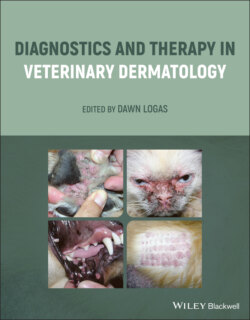Читать книгу Diagnostics and Therapy in Veterinary Dermatology - Группа авторов - Страница 60
Matrix‐Assisted Laser Desorption Ionization‐Time of Flight Mass Spectrometry
ОглавлениеAnother newly popular research modality within microbiology is matrix‐assisted laser desorption ionization‐time of flight mass spectrometry (MALDI‐TOF MS), which identifies microorganisms based on their unique mass spectrum. MALDI‐TOF MS is a “soft” ionization technique causing minimal to no fragmentation of the molecules, which allows for the study of larger proteins. In this technique, the microorganism is mixed with a matrix (matrix‐assisted) and crystalized onto a target plate. The purpose of the matrix is to protect the microorganism from decomposition during exposure to the laser‐emitted heat. The plate is placed into the plate chamber and laser energy is used to apply heat to the sample, causing it to desorb (laser desorption) into singly charged ions. The ions are passed through a flight tube and separated based on their mass‐to‐charge ratio, with the smaller, lighter ions passing through first (ionization‐time of flight). The mass spectrum generated from this ionization step is detected and compared to a library of known mass spectra and the microorganism is identified (mass spectrometry).
This technique provides rapid, accurate, and cost‐effective identification of microorganisms, and it represents a major innovation for identification of clinically relevant bacteria, fungi, viruses, and parasites (Benagli et al. 2011; Bourassa and Butler‐Wu 2015; Kostrzewa et al. 2019; Pavlovic et al. 2015; Tartor et al. 2019). After as little as two days of colony growth on culture, dermatophyte genus identification is achieved using MALDI‐TOF MS, which allows for expedited antifungal treatment (Welker et al. 2019). MALDI‐TOF MS is also a sensitive, specific, and inexpensive way to study antimicrobial resistance and cellular biomarkers of infection, and can identify and characterize newly emerging microorganisms faster and more completely than culture techniques. This diagnostic modality is not without limitations, however, including nonstandardized protocols, limited database quality and diversity, and unexpected results (Van Belkum et al. 2017).
